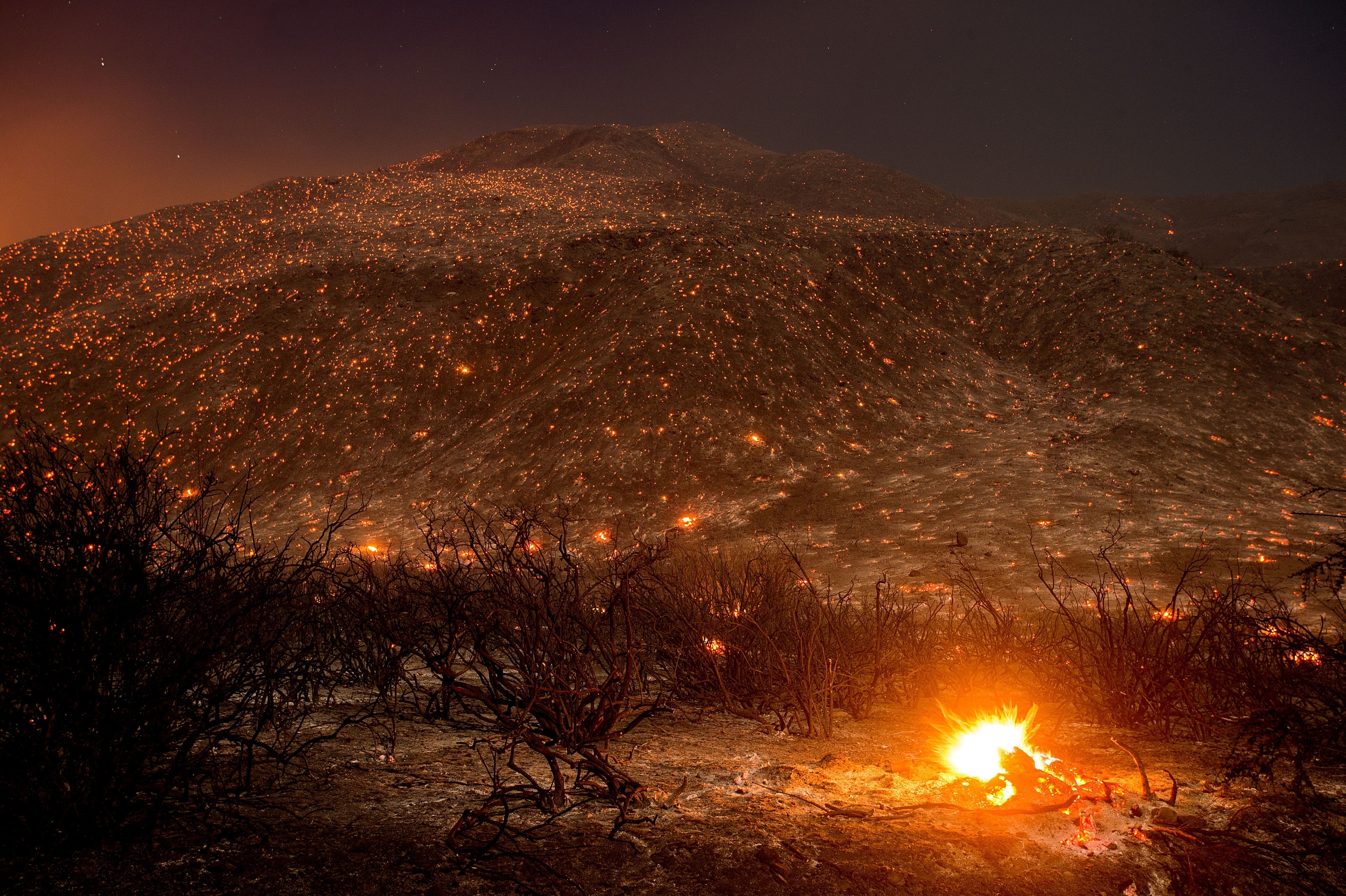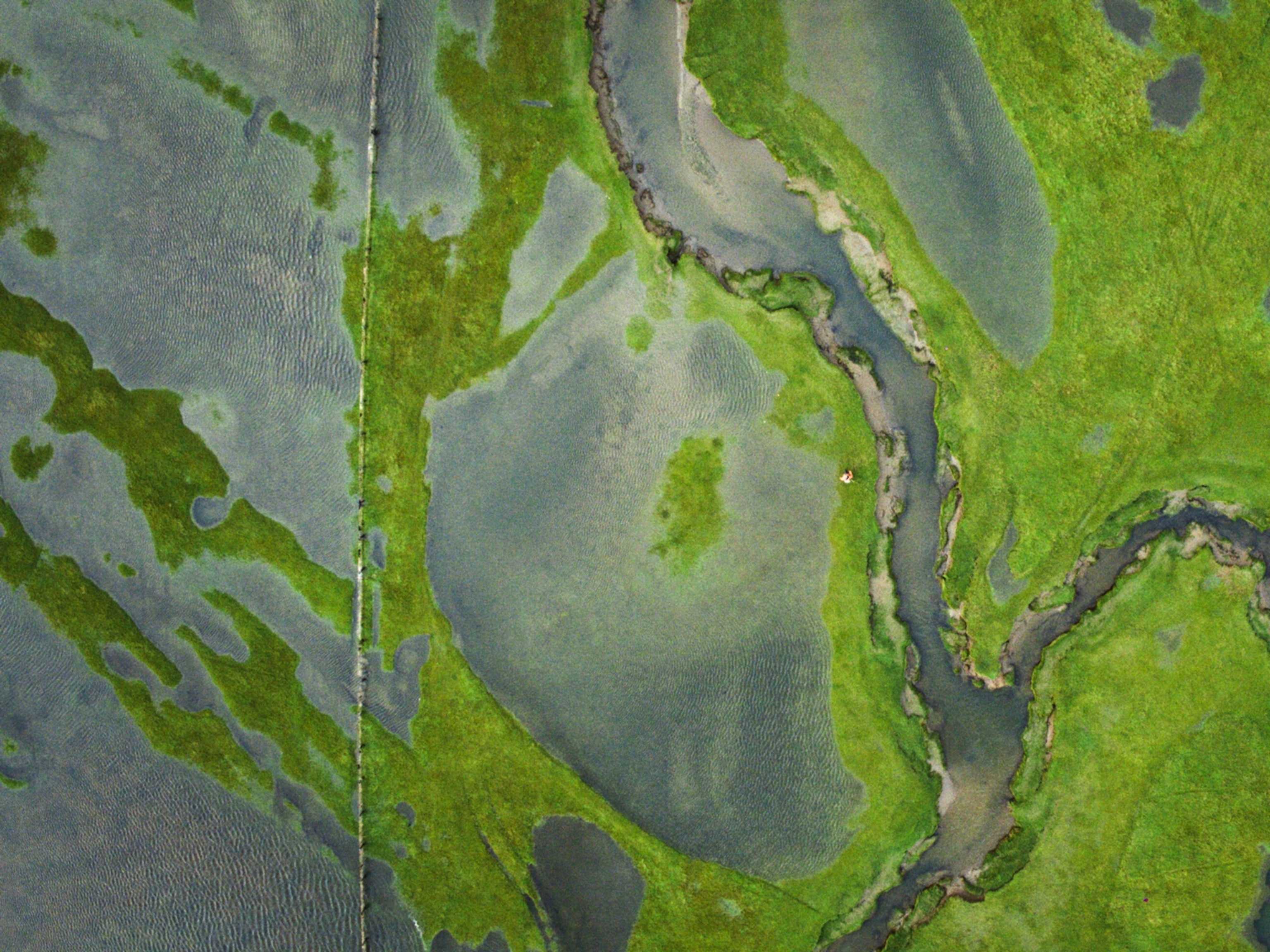
Stunning Photo Sheds Light on Wildfires’ Unusual Devastation
Photographer Noah Berger shares what it takes to work in the tinder box of California's wild lands.
People tend to imagine wildfires as a menacing wall of 50-foot flames voraciously tearing through miles of terrain. In actuality, when covering a fire, it’s often a struggle to put yourself in the right position to capture dramatic flames and heroic firefighters. The fires often burn in steep, inaccessible terrain, and it can take hours to drive around a fire’s perimeter.
Last week, I had just returned home from three days documenting the devastating Clayton fire—a few hours north of San Francisco—when I got a go-ahead from the Associated Press to fly to Los Angeles for the Blue Cut fire. Within two hours of landing, I had wrangled a 4x4 rental, navigated several police checkpoints, and was photographing inside the fire zone.
I was actually pursuing a helicopter dropping water at night (which is fairly rare) when I came across this hillside lined with flickering embers in the Lytle Creek Canyon north of San Bernardino. I was toting a cheap, small tripod. It’s easy to fly with but wouldn’t hold up to heavy usage. The tripod legs were actually resting in hot embers—another reason a cheap tripod can be preferable!
To give the frame a more ethereal feel, I shot this as a long exposure. Sometimes long exposures of fire can be used in a slightly “cheating” way to make the fire seem stronger than it is, but in this case the frame captures more or less what a bystander would have seen.
When photographing fires, there are a variety of tools that can increase your success. It's taken many years to hone these skills, and I still have a lot to learn. I've built up a knowledge of fires and learned how to monitor a police scanner, wear full safety gear, look for different perspectives, and communicate with firefighters and other photographers to figure out where the hot spots are.
One last thing—when working in these areas, it's important to stay out of the way of firefighters, fleeing residents, and other emergency responders. I always keep this foremost in my mind while shooting. No matter how stressed I am about producing a strong image or meeting a deadline, my job is a distant second to the one of responders, who are struggling to save homes and lives.
View more of Noah Berger's work on his website. To learn more about photographing in wildfire zones, read about Mark Theissen's work on the Fork Complex fire in Northern California.




